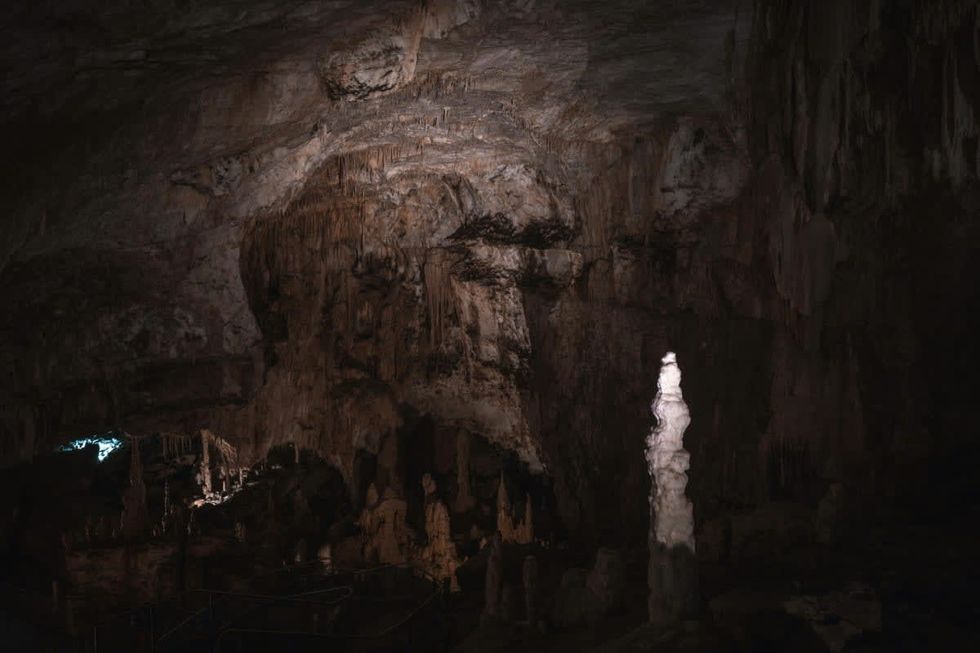Although Earth might seem like a stable, flat surface where we live our lives, seismologists have discovered that it’s far from passive. In fact, Earth has a 'heartbeat' that pulses every 26 seconds, according to Discover Magazine. Known as "microseisms," these faint seismic tremors resemble tiny earthquakes, though they aren’t exactly the same. For decades, scientists have been baffled by these mysterious tremors, and despite many theories, no definitive explanation has been found.

In humans, a heartbeat is produced by electrical signals that cause the heart muscles to contract and expand. But for Earth, the source of its mysterious 'heartbeat' remains unknown. This phenomenon was first documented in the early 1960s by geologist Jack Oliver, who suggested that the pulse might originate from somewhere in the southern or equatorial Atlantic Ocean. However, he lacked the sophisticated instruments needed to investigate further. “Jack didn’t have the resources in 1962 that we had in 2005 — he didn’t have digital seismometers, he was dealing with paper records,” Michael Ritzwoller, a seismologist at the University of Colorado, Boulder, told Discover Magazine. Since then scientists have spent a lot of time listening to this pulse and trying to solve the mystery.
Lars Eivind Augland, associate professor in the Department of Geosciences at the University of Oslo, found the phenomenon of a 26-second pulse fascinating. "Yes, you may call it a kind of pulse. The Earth’s crust has regular tremors. They are so small that they do not pose a threat as real earthquakes can," he told Yara International. Augland explained that every 26 seconds, the heartbeat of Earth is recorded by seismic station computers around the world. These blips are most noticeable in West Africa, North America, and Europe, he said. Geologists and seismologists have given varied explanations behind the occurrence of this phenomenon including ocean waves, volcanoes, and fractures in sediments.
"Originally, the micro-quakes, or the pulse detected at intervals of 26 seconds, were explained by wave activity in the Gulf of Guinea in West Africa. Special depth conditions, the geometry of the ocean floor, and the coast have been pointed out as possible causes. Due to how the waves hit and create resonance on the seabed, they could, in turn, propagate as earthquake waves in the Earth's crust," explained Augland.

In 2013, during the Seismological Society of America conference, a student named Garrett Euler also said the same thing, furthering the source location of the pulse to the region called “Bight of Bonny” in the Gulf of Guinea. He elaborated his hypothesis by adding that waves hitting and crashing against the coast might be the probable reason for this pulse. But this explanation was soon ruled out by most experts.
Apart from ocean waves, a second explanation behind this pulsation was believed to be “volcanoes.” The same year, Yingjie Xia from the Institute of Geodesy and Geophysics in Wuhan, suggested the cause was actually volcanoes, not waves. He explained this by saying that the island of São Tomé in the Bight of Bonny was close to the volcano.

After ruling out waves and volcanoes, Augland proposed a third explanation: sediment cracks. "A third explanation can be found in the latest study published in the renowned journal Earth and Planetary Science Letters, which states that fluid flowing through fractal fissure networks in sediments under the seafloor is the cause of the tremors," Augland told Yara International, further specifying that none of the three explanations have any supporting evidence.
Despite its puzzling nature, the 26-second pulse is not something unusual. According to BRIGHT SIDE’s YouTube video, Earth doesn’t only have a heartbeat but also a humming sound. Some people may notice it, and some may not, but this high-frequency buzzing sound called “The Hum” is prevalent throughout the planet. Like the mysterious 'heartbeat,' geologists have also tried to explain this “mysterious hum or buzz” but none has proved true to their satisfaction.

















 Representative Image Source: Pexels | Anni Roenkae
Representative Image Source: Pexels | Anni Roenkae Representative Image Source: Pexels | Its MSVR
Representative Image Source: Pexels | Its MSVR Representative Image Source: Pexels | Lucian Photography
Representative Image Source: Pexels | Lucian Photography

 Representative Image Source: Pexels | francesco ungaro
Representative Image Source: Pexels | francesco ungaro Representative Image Source: Pexels | parfait fongang
Representative Image Source: Pexels | parfait fongang Image Source: YouTube |
Image Source: YouTube |  Image Source: YouTube |
Image Source: YouTube |  Image Source: YouTube |
Image Source: YouTube | 
 Representative Image Source: Pexels | Hugo Sykes
Representative Image Source: Pexels | Hugo Sykes Representative Image Source: Sectional view of the Earth, showing central fire and underground canals linked to oceans, 1665. From Mundus Subterraneous by Athanasius Kircher. (Photo by Oxford Science Archive/Print Collector/Getty Images)
Representative Image Source: Sectional view of the Earth, showing central fire and underground canals linked to oceans, 1665. From Mundus Subterraneous by Athanasius Kircher. (Photo by Oxford Science Archive/Print Collector/Getty Images) Representative Image Source: Pexels | NASA
Representative Image Source: Pexels | NASA




 Representative Image Source: Pexels | Steve Johnson
Representative Image Source: Pexels | Steve Johnson Representative Image Source: Pexels | RDNE Stock Project
Representative Image Source: Pexels | RDNE Stock Project Representative Image Source: Pexels | Mali Maeder
Representative Image Source: Pexels | Mali Maeder
 Photo: Craig Mack
Photo: Craig Mack Photo: Craig Mack
Photo: Craig Mack